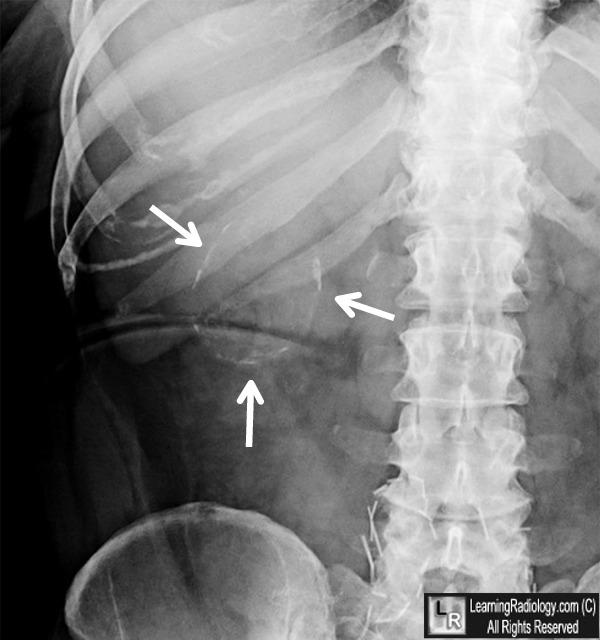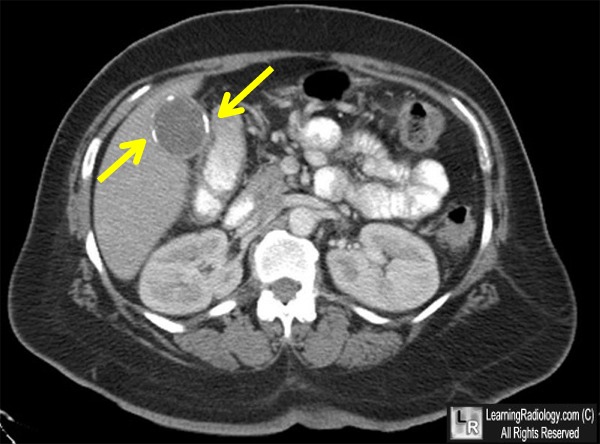|
|
Porcelain Gallbladder
General Considerations
- Calcification of all or part of the gallbladder wall
- So named because of its gross appearance (bluish in color) and its similarity to porcelain (brittle in consistency)
- Incidence:
- Less than 1% of cholecystectomy patients
- F:M 5:1
- Histology
- Flakes of dystrophic calcium within chronically inflamed and fibrotic muscular wall
- Wall is thickened and gallbladder is contracted
- Associated with gallstones in 90%
- Cystic duct is always obstructed
- 80% of patients with carcinoma of gallbladder have stones
Clinical Findings
- Patients are usually asymptomatic
Imaging Findings
- On conventional radiographs or CT, curvilinear calcifications in segment of the wall or entire wall
- CT is more sensitive than conventional radiographs
- Thickness of calcification may vary
- On ultrasound, highly echogenic, shadowing, curvilinear structure in GB fossa
- DDx: stone-filled contracted GB
- Echogenic GB wall with little acoustic shadowing
- DDx: emphysematous cholecystitis
- Scattered irregular clumps of echoes with posterior acoustic shadowing
Differential Diagnosis
- Imaging pitfall
- Contracted gallbladder with calcified wall can be mistaken for a gallstone
- Calcified hydatid cyst of liver
- Large gallstone with peripheral calcification
Treatment
- Because of its high association with carcinoma of the gallbladder, a cholecystectomy is usually performed
Prognosis
- 20-30% develop carcinoma of gallbladder


Porcelain Gallbladder. Upper: Radiograph of right upper quadrant of the abdomen
shows a curvilinear calcification
indicating calcification if the wall of a "hollow viscous"
in the region of the gallbladder (white arrows).
Lower: Axial CT image of the upper abdomen in the same patient confirms the thin calcification in the gallbladder wall (yellow arrows).
For these same photos without the arrows, click here and here
For more information, click on the link if you see this icon 
Porcelain Gallbladder. eMedicine. AN Khan.
|
|
|